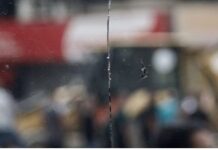David Cronin
The Electronic Intifada / September 7, 2021
The European Union has quietly negotiated a cooperation deal with an Israeli government ministry based in occupied East Jerusalem.
While the agreement received wide support in the Brussels bureaucracy, some officials have contended that it may not be signed with a body located on territory seized during the 1967 War.
In 2018, the EU’s Joint Research Centre – which runs a network of laboratories – entered into talks with Israel’s science and technology ministry. The objective was to reach an accord that would enable collaboration in “multiple areas of common interest,” an internal EU paper states.
The paper, obtained under freedom of information rules, indicates that such an accord was drafted and circulated during 2019 within the European Commission, as the EU’s executive is called.
All 11 of the European Commission’s departments consulted about the draft accord provided a “positive opinion,” the paper – see below – states.
However, the EU’s diplomatic service and in-house lawyers made a request “to change the Israeli counterpart.” They objected, the paper adds, because Israel’s science ministry has its registered address on Clermont-Ganneau Street – near Ammunition Hill in East Jerusalem.
Should these diplomats and lawyers be commended for advocating that a distinction be drawn between Israel and the territories it captured in June 1967? The short answer is “no.”
Their worries about the location of a ministry in an area under military occupation are negated by their general willingness to embrace Israel, the state enforcing that occupation.
“Untapped potential”
Furthermore, it should be underscored that the diplomats and lawyers were only arguing against signing a formal contract with the science ministry. They did not stipulate that interacting with the ministry must be avoided.
Stephen Quest from the Joint Research Centre confirmed that his organization is “still in contact with the Ministry of Science and Technology, although the COVID-19 pandemic and elections in Israel between 2019 and 2021 have affected the frequency of interactions and discussions on formal arrangements.”
Responding to a query by email, Quest stated that the Joint Research Centre had consulted other departments in the European Commission about “the form, not the content of collaboration with the Ministry of Science and Technology.”
In 2013, the EU’s diplomatic service gave the green light to contact with the science ministry. The ministry is represented in the Israeli body that manages the use of research funding from the European Union.
The EU has a new ambassador to Israel, Dimiter Tzantchev. Shortly after arriving in Tel Aviv, he remarked that EU-Israel ties are “already so deep yet still hold a lot of untapped potential.”
Tzantchev did not elaborate when I asked him to explain what “untapped potential” he had in mind. Yet the activities of the EU’s Joint Research Centre offer a clue as to what is being considered.
Another document obtained via a freedom of information request shows that the Joint Research Centre has taken part in seven projects involving Israel’s nuclear industry. Dating from 2017, the paper – see below – says that the center looked forward to “continuing the collaboration.”
An agreement on nuclear research linking the EU and Israel expired in 2018. Stephen Quest from the Joint Research Centre confirmed that the agreement has been extended until 2024.
All of this collaboration is “peaceful,” according to the EU’s internal documents.
Nobody should be deceived by that assurance. As Israel introduced nuclear weapons to the Middle East, its nuclear industry threatens the future of humanity.
Because it has refused to sign the Non-Proliferation Treaty, Israel does not allow international inspection of its nuclear facilities. The technician Mordechai Vanunu was sentenced to 18 years imprisonment for revealing details of Israel’s nuclear weapons back in 1988.
Just as it is artificial to draw a distinction between Israel and “the occupation,” it is artificial to draw a distinction between Israel’s nuclear power program and its nuclear weapons.
The Joint Research Centre has directly teamed up with Israel’s Atomic Energy Commission. It runs the Dimona complex, where Israel’s nuclear weapons were assembled.
Besides, the EU does not invite scrutiny of its nuclear cooperation with Israel. Some details of this work were censored – supposedly for “public security” reasons – in the documents released to me.
It is not surprising that EU bureaucrats are being less than transparent – to put it charitably.
One way of addressing the “untapped potential” in EU-Israel ties would be to strengthen collaboration with its nuclear industry. That would excite ambassadors in Tel Aviv but horrify anyone who cares about peace and justice.
David Cronin is an associate editor of The Electronic Intifada; his books include Balfour’s Shadow: A Century of British Support for Zionism and Israel and Europe’s Alliance with Israel: Aiding the Occupation












